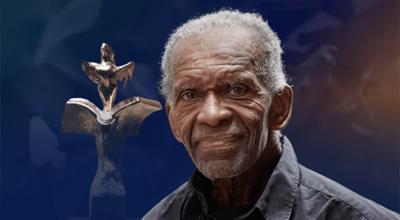Ask Trooper Rob: New drivers trained to fight road rage
Published 9:44 pm Thursday, July 26, 2012
“Road Rage” or “Violent Aggressive Driving” is defined as an incident in which an angry or impatient motorist or passenger intentionally injures or kills another motorist, passenger or pedestrian in response to a traffic dispute, altercation or grievance (Mizell, 1997, (AAA of Michigan). As human drivers, I am positive we have all felt some sort of rage at some point in our driving careers.
Michigan does not have a specific “Road Rage” law. However, we do have other laws that can be related to this potential deadly situation.
Assault, assault and battery, aggravated assault, malicious damage to property and stalking are a few of these laws.
The T.E.A.M curriculum I have mentioned in past articles (the school liaison program) has a driving lesson in the high school section. After research with driver’s education instructors, I wrote a lesson titled “Arrive Alive” and have a section covering road rage. This lesson can be and is taught in driver’s education classes for Michigan’s Graduated Driver License Program. In this section, we define the situation and talk of causes and avoidance techniques.
We also advise new drivers that they will probably be the cause of many “Road Rage” situations. I ask new drivers what they are going to do at the stop signs. Their correct answer is to stop. I ask what their speed is if the speed limit sign says 25mph. Their correct answer is 25 mph.
I also explain that by doing the proper driving techniques, they may be in front of a driver that feels they can “roll” through the stop sign or maybe do 40 mph in the 25 mph zone. I challenge them to not give in to the “peer pressure” of the other driver and to continue to follow the law and proper driving skills.
My daughter recently passed her education and is now driving with me with her Graduated Driver’s License, level 1. Recently, she was driving and behind us for about five miles was a very impatient motorist who was tailgating so close, when I looked behind us, I could not see his headlights. My daughter did an excellent job of not giving in and speed. At no time did she do anything to upset the driver or cause any further incident, such as tapping the brakes. She maintained proper driving etiquette. On the way home from our short trip, she approached an intersection where construction was taking place. She could see clearly to her left, but neither of us could see to our right so she slowly made her way forward until we could see an approaching vehicle.
The vehicle behind us began honking their horn and “flipped her off.” I assume the driver of the following vehicle would have rolled through the intersection and fail to yield to the oncoming traffic. For the next three to four miles, they (two young males) began the tailgating and showing obscene gestures to this young lady and me. As we got off on our exit, they slowed and we saw four middle fingers.
Both drivers had out-of-state plates, and I could not see the numbers. I would ask drivers be aware of the new drivers, elderly drivers and all other drivers that obey the motor vehicle code and don’t be part of the “Road Rage” problem that seems to be increasing.
Based on recent successes with similar operations in Detroit, the Flint Police Department organized an undercover sting operation in the fall of 1978.
The undercover officers would pose as fences, buying stolen goods and then, later, arresting the thieves.
The Flint Police asked the Michigan State Police for black troopers from other areas of the state so they wouldn’t be recognized by the local crooks. Although assigned as uniformed patrol troopers at the Detroit Freeway Post, Norman Killough and Robert Thorton were assigned to this detail.
Killough and Thorton would drive a van through high-crime areas soliciting stolen goods from the street criminals. To add realism, a Flint police tactical team would periodically stop the van and “shakedown” the two troopers in full view of the criminals.
Having acted this scenario out hours earlier, Killough and Thorton drove through the north side of the city about 1 a.m. Oct. 7, 1978.
After stopping the van, the Flint officers stopped and approached the “suspects” with guns drawn. When Killough stepped from the van, one of the Flint officers spun him around to search him with his snub nosed .38 caliber revolver pointing at Killough’s side, unaware the shrouded hammer was cocked. The gun accidently fired striking Killough in the side of the chest.
Killough, who enlisted in the MSP on March 23, 1975, was pronounced dead at Flint’s Hurley Hospital. An inquest jury ruled it an excusable homicide and a “tragic accident.”
Two of Killough’s cousins, Harry Norman and George Crawford, were also Michigan State Police troopers. Killough became the first black MSP trooper to die in the line of duty and was also the first MSP trooper to be awarded, posthumously, the new Memorial Medal. He was the 31st trooper to die in the line of duty and, after a full departmental honored ceremony, was cremated in Okemos.






